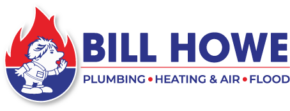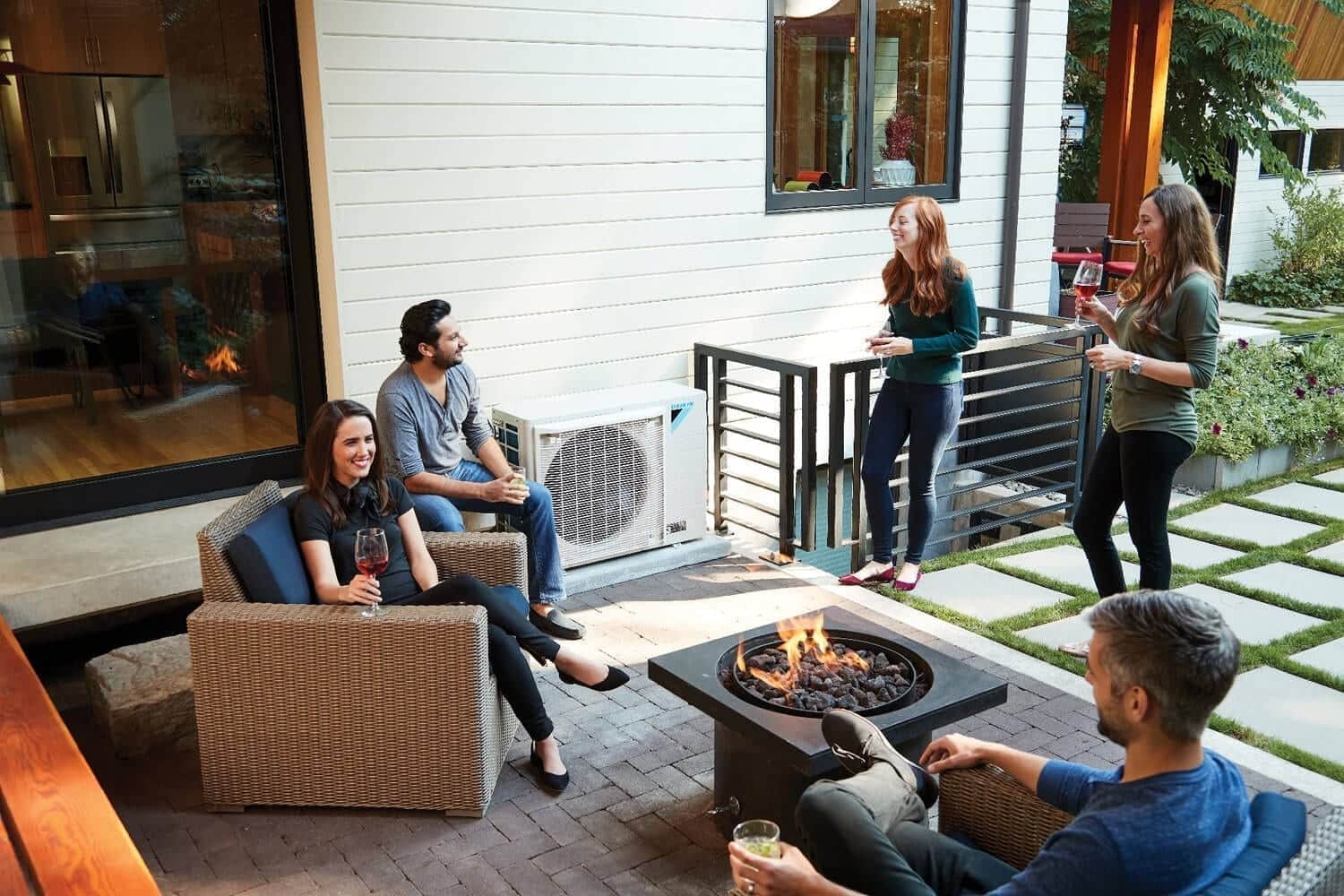Keep your home cozy and safe by replacing your furnace at the right time. Wondering how long furnaces last? We’ve got answers to your heating questions. Read on to know when it’s best to upgrade your home’s heating system for top-notch efficiency and safety.
What is the Average Furnace Lifespan?
Most high-efficiency furnaces from quality manufacturers have a lifespan of 15 to 20 years. However, if homeowners don’t perform regular maintenance or necessary furnace repairs, the system may break or need replacing before its lifetime. Manufacturer warranties typically last about 12 years, but with care and maintenance, homeowners can extend the life of their furnaces beyond the warranty period.
Does a Gas Furnace Last Longer?
Both gas and electric furnaces have an equal life expectancy. However, because one uses electricity and the other gas, they will affect your utility bill differently. Additionally, gas and electric furnaces require different types of maintenance.
How to Make a Furnace Last Longer?
Maintaining the longevity of your furnace is pivotal in ensuring a cozy and worry-free home environment. Beyond the financial benefits of keeping manufacturer warranties intact, routine maintenance is a key player in avoiding costly repairs and replacements. At Bill Howe Heating and Air Conditioning, we go the extra mile by offering one year of complimentary preventative maintenance with every new heater installation.
For homeowners seeking long-term peace of mind, we advocate enrolling in our Energy Savings Agreements, available in 2-5-year plans. This not only streamlines the maintenance process but also guarantees that your furnace is in the hands of experts who will promptly notify you when it’s time for a tune-up and safety inspection. You can also look into Bill’s Family Plan, which offers comprehensive service and benefits at an incredible value.
An annual furnace tune-up and safety inspection by a licensed specialist are crucial steps in guaranteeing an efficient and durable heating system. Our seasoned Bill Howe technicians bring years of experience to the table, adeptly identifying potential issues, executing meticulous cleaning routines, and performing general maintenance tasks that contribute to the furnace’s optimal functionality.
Timing is everything when it comes to furnace care. Scheduling an installation or inspection during the fall, before the winter chill sets in, offers numerous advantages. Heating companies tend to have greater availability and extend special offers. It’s an ideal time to ensure that your furnace operates at its peak during the months you need it the most.
Benefits of Furnace Maintenance
HVAC technicians know that routine maintenance can reduce the need to replace furnaces—it’s an ideal way to extend furnace life expectancy! And while regular maintenance may be able to extend the life of your furnace, there are plenty of other benefits, too. When you’re proactive about routine furnace and heating maintenance, you can help ensure that your furnace maintains optimal performance, meaning lower energy bills.
There are several other benefits to routine maintenance, including:
- Better heating throughout your home. Regular maintenance, involving thorough cleaning and precise calibration, enhances airflow and temperature detection. This results in a more uniform and efficient distribution of heat across all rooms.
- Reduced energy and fuel costs. By maintaining your furnace at its peak performance, you reduce its workload, leading to lower energy consumption and subsequently, decreased utility bills. This translates into tangible savings for homeowners.
- Extends the life of the system. Routine maintenance emerges as a critical factor in extending its average duration. Scheduled annual maintenance visits not only proactively address potential issues but also provide homeowners with foresight into potential major repairs or replacements. This foresight allows for informed decisions and financial planning.
- Fewer breakdowns. A maintenance plan enables professional technicians to identify and rectify issues before they escalate into major problems. Comprehensive inspections and cleaning are integral parts of maintenance, reducing the likelihood of unexpected breakdowns.
- Better indoor air quality. Dust, mold, pollen, and debris get cycled into the furnace system. Once you turn on your furnace, the build-up of dust, mold, pollen, and debris gets blown right back into the air of your house. With a tune-up service, the technician ensures that the unit is cleaned out and will replace the air filter if it’s dirty.
- Furnace maintenance ensures a warm, safe, and comfortable home during the cold season. By scheduling maintenance before winter arrives, homeowners not only guarantee their furnace is operating optimally but also provide an opportunity to address any potential issues or replacements before the onset of colder temperatures.
Regular furnace maintenance offers numerous benefits, such as extending the lifespan and improving the performance of your heating system. However, there comes a time when a furnace may simply need replacement. It’s essential to identify signs that indicate the need for a new furnace.
Signs it’s Time to Replace Your Furnace
Just like any other appliance, older and less efficient furnaces show clear signs that it’s time for repairs or replacement. Key indicators suggesting a furnace may be reaching the end of its operational life include:
1. Age
A well-maintained furnace can last up to 20 years, but issues become more likely after 10 years. With proper care, you can expect an additional 5 to 10 years of functionality, though warranties often expire by year 12. Beyond 15 years or without maintenance, consider planning for a new furnace.
2. Frequent Furnace Service Calls
Consider replacing the furnace if you frequently call a technician for service calls. With the average lifespan of a furnace about 15 to 20 years, you might be tempted to hold off buying a new unit if it hasn’t reached that age. However, service calls and repairs add up, and when the cold season arrives, the last thing you want to be stuck with is a broken furnace.
3. Major Repairs
When any mechanical system, just like vehicles, continues to need repairs, it is time to think about replacing the system. While repairing one part of a furnace can keep the system running, likely, other parts aren’t far behind in terms of failure. And, as the furnace ages, replacement parts may be harder to get or change out. Bill Howe is always ready to help you with repairs, as well as help select and install a new furnace when it’s time for an upgrade.
4. Yellow Flames
A properly functioning natural gas furnace will have a clear and crisp blue flame. This flame indicates a healthy and clean system with no gas leaks or possible safety issues. Homeowners can check the flame while the system is running by peeking through the furnace’s cover vents. If the flame is yellow, it could mean the system’s heat exchanger or burner needs to be cleaned, and possibly lead to more serious problems such as carbon monoxide leaks or other natural gas leaks. Yellow flames should be addressed immediately by a licensed professional.
5. High Energy Bills
Just like air conditioning, furnaces that are old and inefficient will increase the energy costs associated with running them. If your bills become abnormally high during the months you’re using your furnace, it could be time to replace the equipment with a more efficient model.
6. Strange Furnace Noises
- Rattling: Loose ducts or equipment may be causing the rattle.
- Popping: temperature changes in the furnace can cause parts to make popping sounds.
- Booming: you might have an issue with the furnace gas emission if you hear booming sounds. There may be a delay during the ignition process. If there’s a lingering gas odor, you’ll want to call a technician to replace the furnace.
- Screeching: The blower motor is probably damaged when you hear screeching from the furnace. This sound may indicate that the furnace has a damaged belt or pulley.
- Clicking: the flame sensor or igniter may need to be fixed if you hear clicking from the furnace.
- Humming: if you’ve been hearing humming and it’s getting louder each time you use the furnace, there could be an issue with the blower motor. If that’s the case, it could be best to replace the furnace.
7. Sudden Temperature Changes Throughout the Home
When you turn on the furnace, and the heat is not evenly distributed throughout your home, it’s not just annoying; it’s also a sign that the furnace is no longer working as it should.
8. Excess Soot Accumulating Near the Furnace Register
A build-up of soot and dust in your home is a sign your furnace is producing an excess amount of Carbon Dioxide. Soot and dust accumulate near the furnace grille and air duct cover.
When Should I Replace My Furnace?
It depends. We say spring is usually the best time for homeowners to replace their old outdated system when searching for a deal. Most HVAC companies offer pre-season specials and usually have great deals on installation and air conditioning repair. However, if your furnace is failing in the colder months when you need it, we recommend replacing it right away so you aren’t left out in the cold.
Schedule a Furnace Service Today
At Bill Howe Heating & Air, we offer complimentary furnace replacement estimates. Our skilled specialists customize each estimate to align with the homeowner’s specific needs, family dynamics, and the unique configuration of their home. This personalized approach ensures the selection of the most efficient furnace for every household.
If you are considering replacing your old and inefficient heating system, or need A/C this summer, call the experts at 1-800 BILL HOWE (245-5469) today!
Financing a New System
If you have an older furnace, it’s an excellent time to consider an upgrade. We’re here to help! Furnaces can be a big investment, and Bill Howe Heating & Air offers several financing options that suit your needs.




